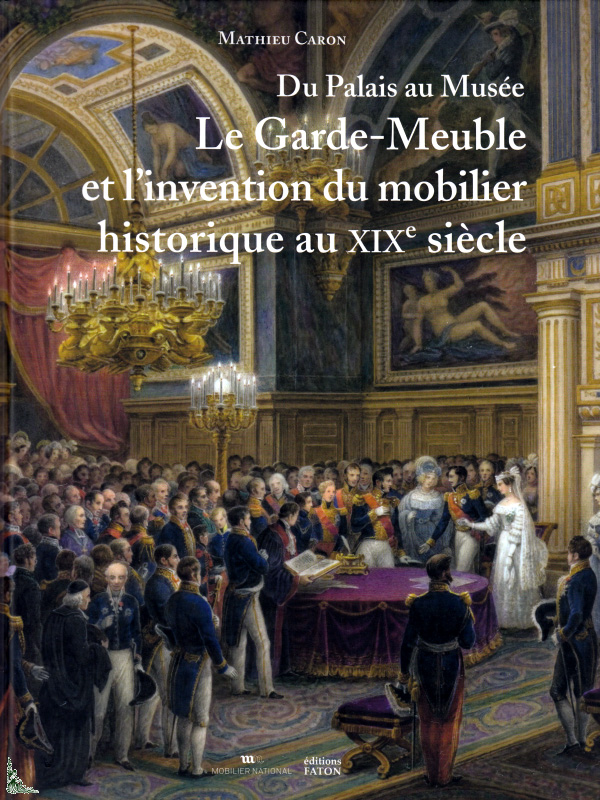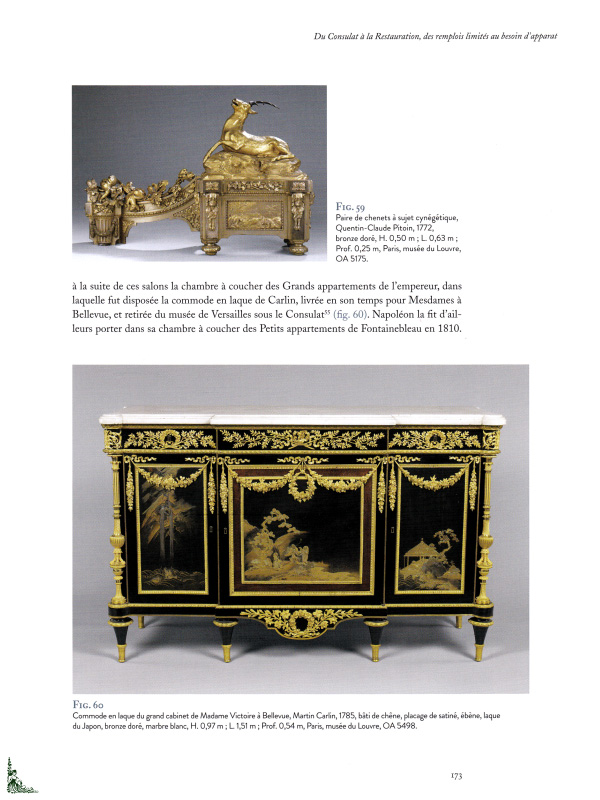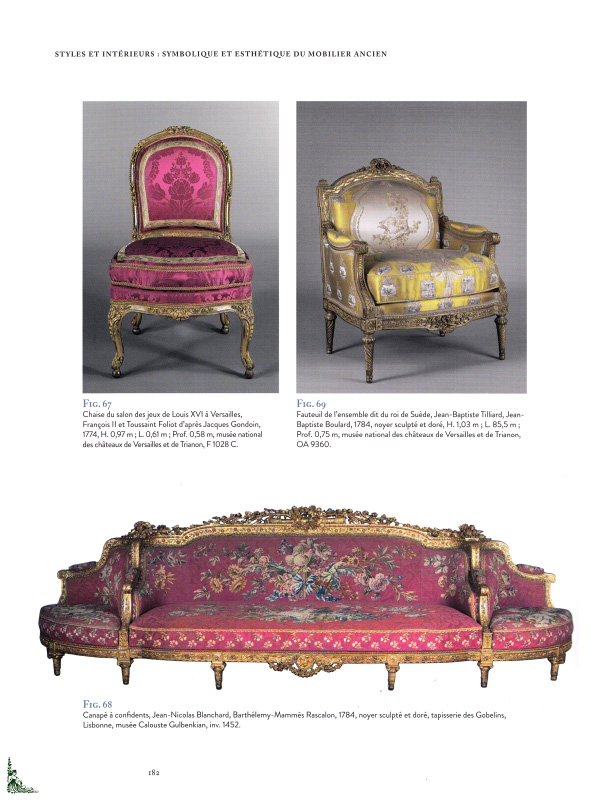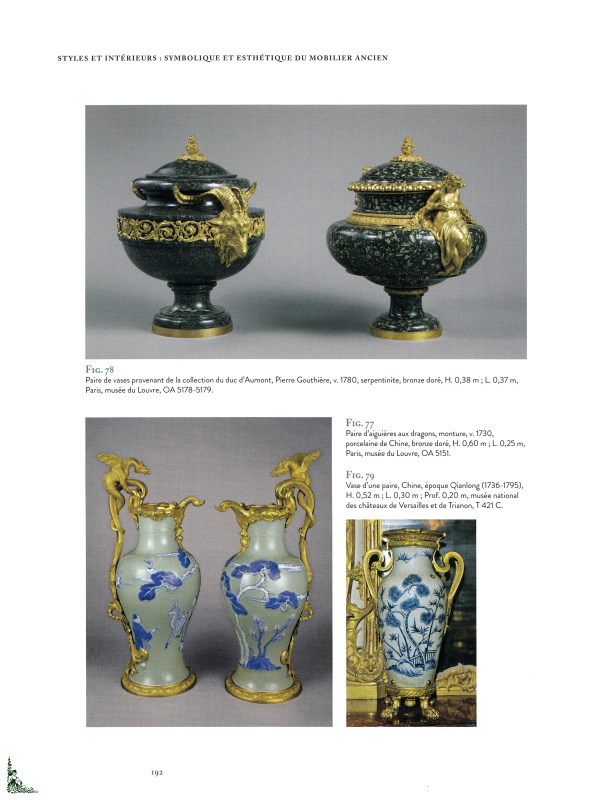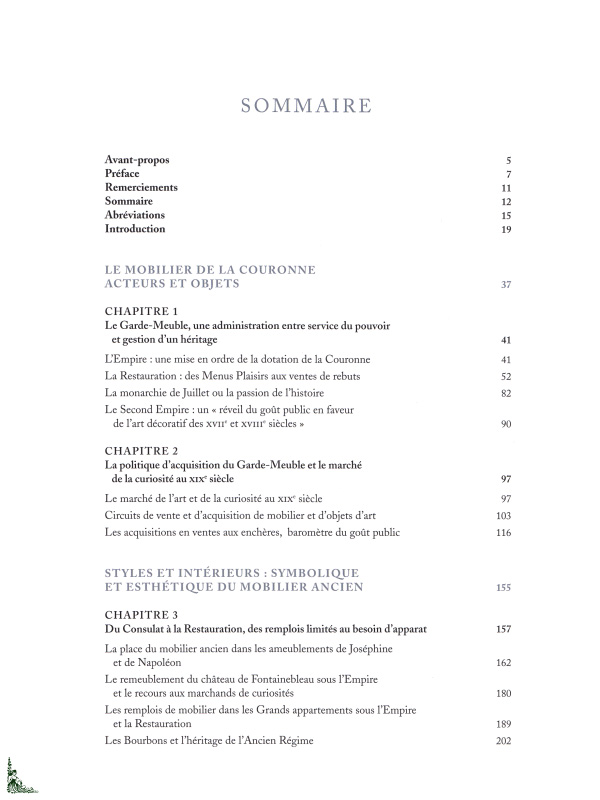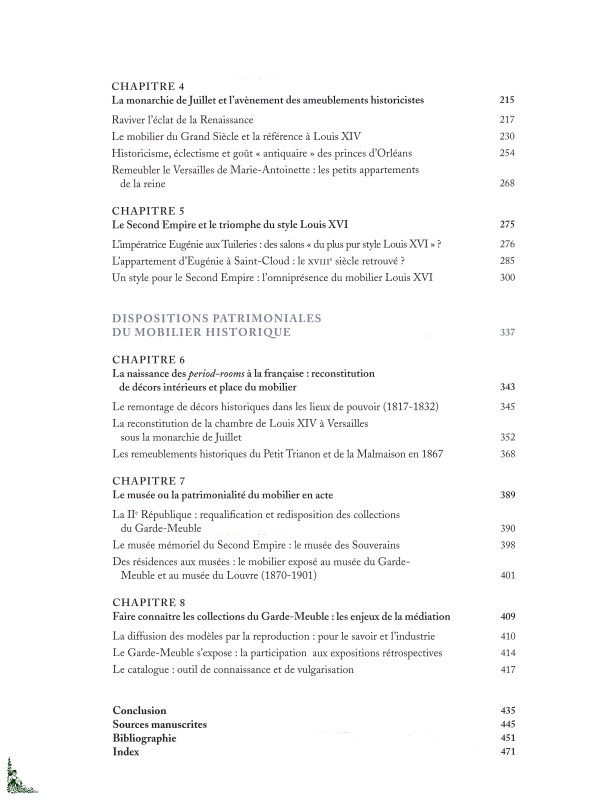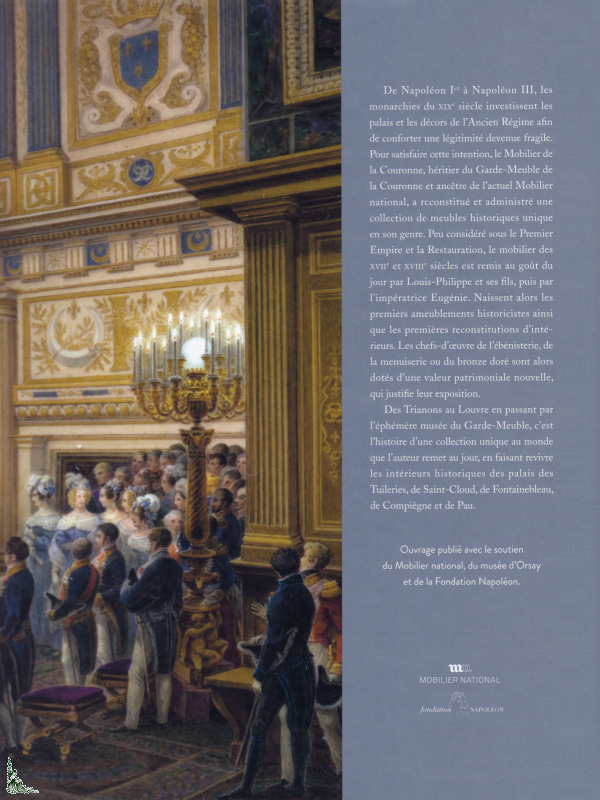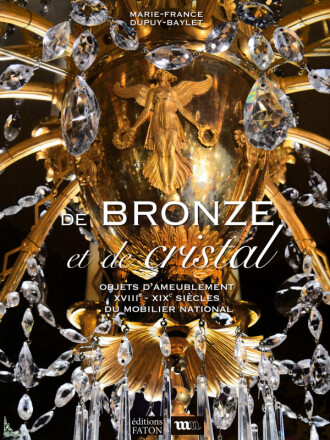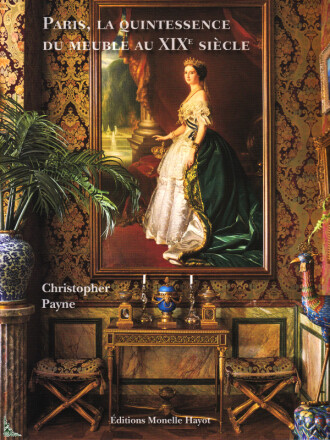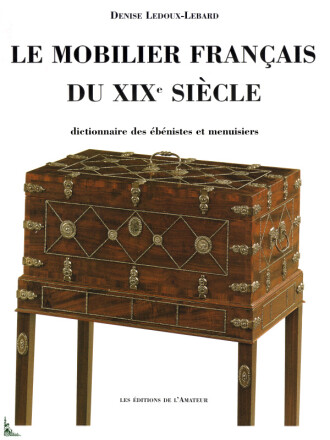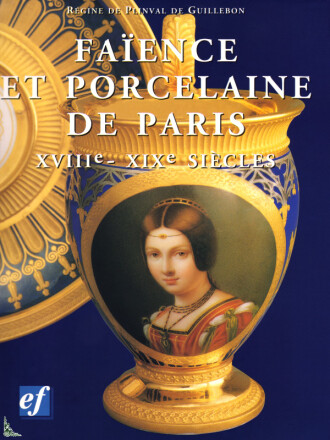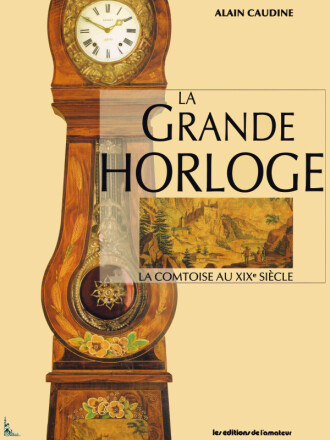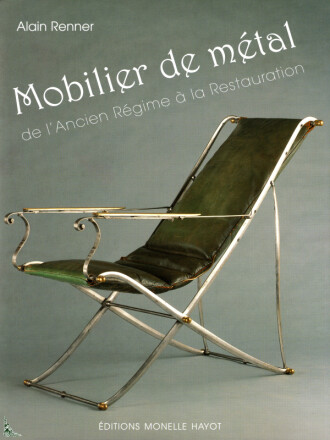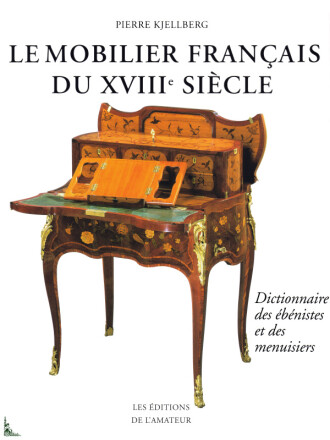The Garde-Meuble and the invention of historic furniture in the 19th century
Informações sobre o livro
| Autor : | Mathieu Caron |
| Editor : | Faton (2021) |
| Encadernação : | Hardcover (480 full color pages) 8-½ inches x 11-½ inches |
| Língua : | French |
| ISBN : | 978-2-87844-296-0 |
| EAN : | 9782878442960 |
Descrição
The Garde-Meuble and the invention of historic furniture in the 19th century, by M. Caron, Ed. Faton, 8-½ inches x 11-½ inches ( 22 cm x 29 cm ), hardcover book with 480 full color pages
This hardcover book with 480 full color pages presents presents the Garde-Meuble and the invention of historical furniture in the 19th century.
From Napoleon 1st to Napoleon 3rd, the 19th century monarchies took over the palaces and decorations of the Ancien Régime in order to consolidate a legitimacy that had become fragile.
To fulfill this intention, the Mobilier de la Couronne, heir to the Garde-Meuble de la Couronne and ancestor of the current National Furniture, has reconstituted and managed a collection of unique historical furniture. Little considered under the First Empire and the Restoration, the furniture of the 17th and 18th centuries was brought up to date by Louis-Philippe and his sons, then by the Empress Eugenie. The first historicist furnishings were born as well as the first interior reconstructions. The masterpieces of cabinetmaking, carpentry or gilded bronze are then endowed with a new heritage value, which justifies their exposure.
From the Trianons to the Louvre via the ephemeral Musée du Garde-Meuble, it is the story of a collection unique in the world that the author brings to light, by bringing to life the historic interiors of the Tuileries palaces, Saint -Cloud, Fontainebleau, Compiègne and Pau.
Contents:
- Foreword by Hervé Lemoine
- Preface by Barthélémy Jobert
- Introduction
- The Garde-Meuble, An administration between the service of power and the management of inheritance
- The policy of acquiring the Garde-Meuble and the curiosity market in the 19th century
- From the Consulate to the Restoration, utilities limited to the need for ceremonies
- The July Monarchy and the advent of historicist furnishings
- The Second Empire and the triumph of the Louis 16th style
- The birth of the period+rooms French-style: reconstruction and interior decorations and place of furniture
- The museum or the heritage of furniture in action
- Promote the collections of the Garde-Meuble: the challenges of media coverage
- Conclusion
- Bibliography
- Index
The French texts are written by Mathieu Caron.
 Description française
Description française
Le Garde-Meuble et l'invention du mobilier historique au XIXe
Détails du livre
| Auteur : | Mathieu Caron |
| Éditeur : | Faton (2021) |
| Reliure : | Relié (480 pages couleurs) 21.5 cm x 29 cm ( 8-½ inches x 11-½ inches ) |
| Langue(s) : | Français |
| ISBN : | 978-2-87844-296-0 |
| EAN : | 9782878442960 |
Description
Le Garde-Meuble et l'invention du mobilier historique au XIXe, de M. Caron, Ed. Faton, 22 cm x 29 cm, relié avec 480 pages couleurs
Cet ouvrage relié de 480 pages couleurs présente Le Garde-Meuble et l'invention du mobilier historique au XIXe.
De Napoléon 1er à Napoléon III, les monarchies du XIXe siècle investissent les palais et les décors de l'Ancien Régime afin de conforter une légitimité devenue fragile.
Pour satisfaire cette intention, le Mobilier de la Couronne, héritier du Garde-Meuble de la Couronne et ancêtre de l'actuel Mobilier national, a reconstitué et administré une collection de meubles historiques unique en son genre. Peu considéré sous le Premier Empire et la Restauration, le mobilier des XVIIe et XVIIIe siècles est remis au goût du jour par Louis-Philippe et ses fils, puis par l'impératrice Eugénie. Naissent alors les premiers ameublements historicistes ainsi que les premières reconstitutions d'intérieurs. Les chefs-d'oeuvre de l'ébénisterie, de la menuiserie ou du bronze doré sont alors dotés d'une valeur patrimoniale nouvelle, qui justifie leur exposition.
Des Trianons au Louvre en passant par l'éphémère musée du Garde-Meuble, c'est l'histoire d'une collection unique au monde que l'auteur remet au jour, en faisant revivre les intérieurs historiques des palais des Tuileries, de Saint-Cloud, de Fontainebleau, de Compiègne et de Pau.
Principaux chapitres de l'ouvrage :
- Avant-propos de Hervé Lemoine
- Préface de Barthélémy Jobert
- Introduction
- Le Garde-Meuble, Une administration entre service du pouvoir et gestion de l'héritage
- La Politique d'acquisition du Garde-Meuble et le marché de la curiosité au XIXe siècle
- Du Consulat à la Restauration, des emplois limités au besoin d'apparat
- La monarchie de Juillet et l'avènement des ameublements historicistes
- Le Second Empire et le triomphe du style Louis XVI
- La naissance des period+rooms à la française : reconstitution et décors intérieurs et place du mobilier
- Le musée ou la patrimonialité du mobilier en acte
- Faire connaître les collections du Garde-Meuble : les enjeux de la médiatisation
- Conclusion
- Bibliographie
- Index
Les textes en Français sont de Mathieu Caron.


